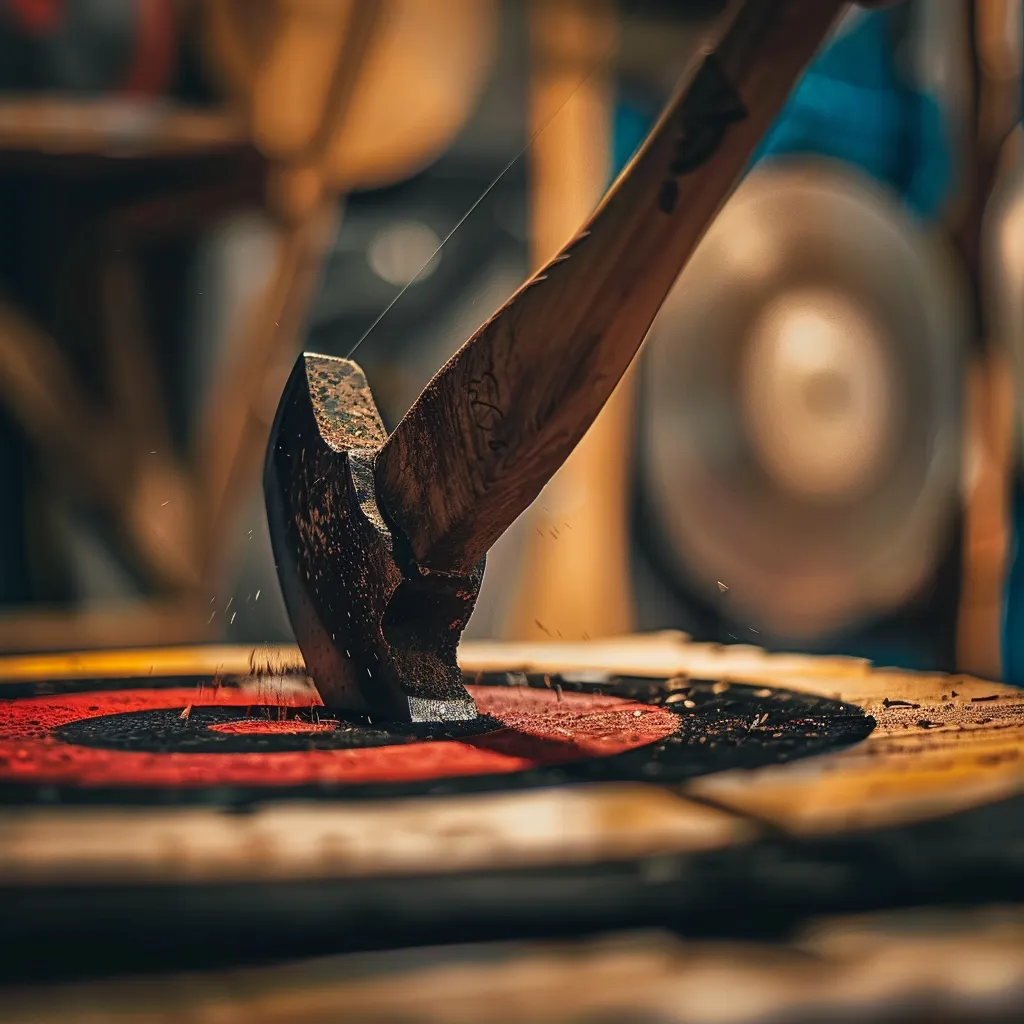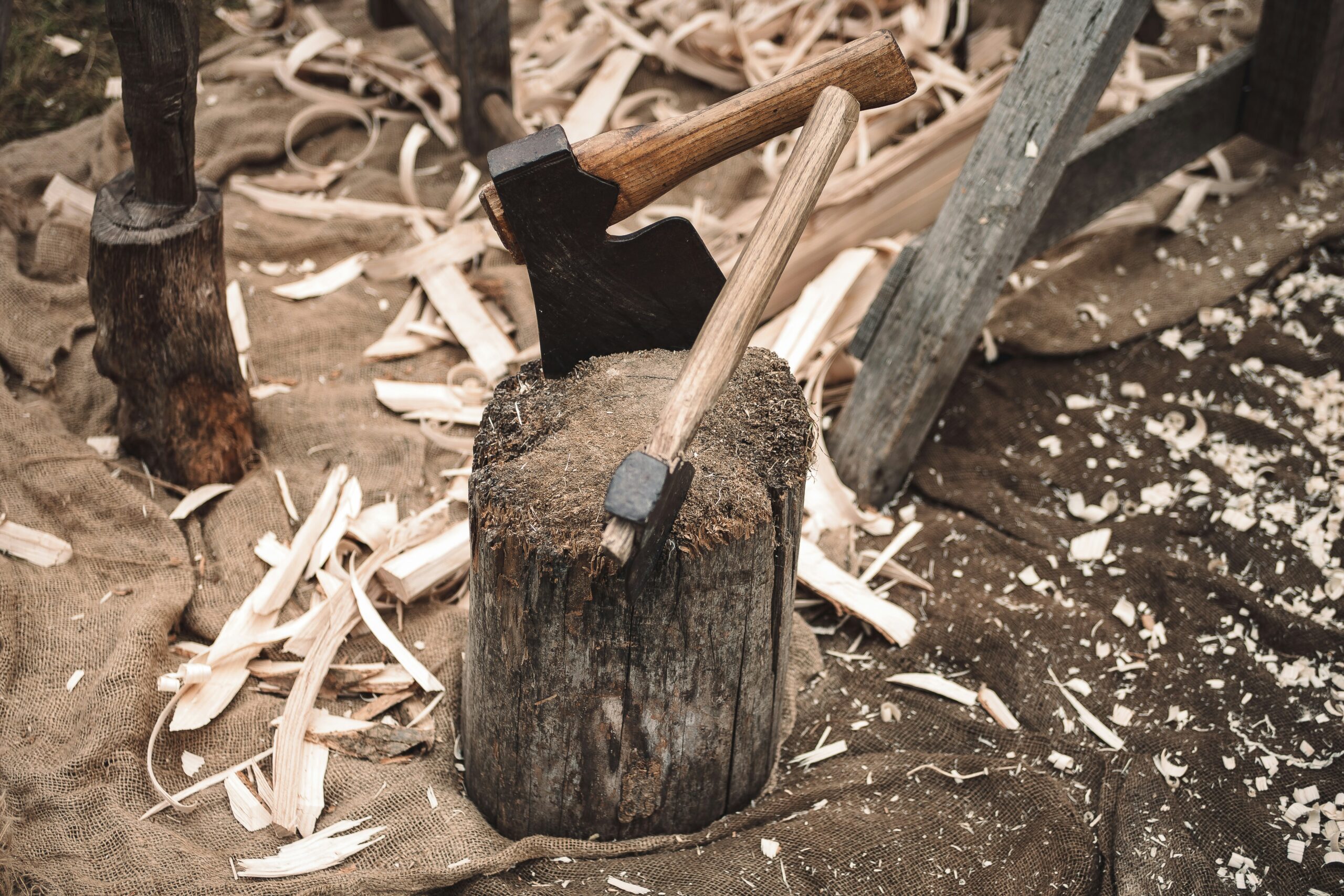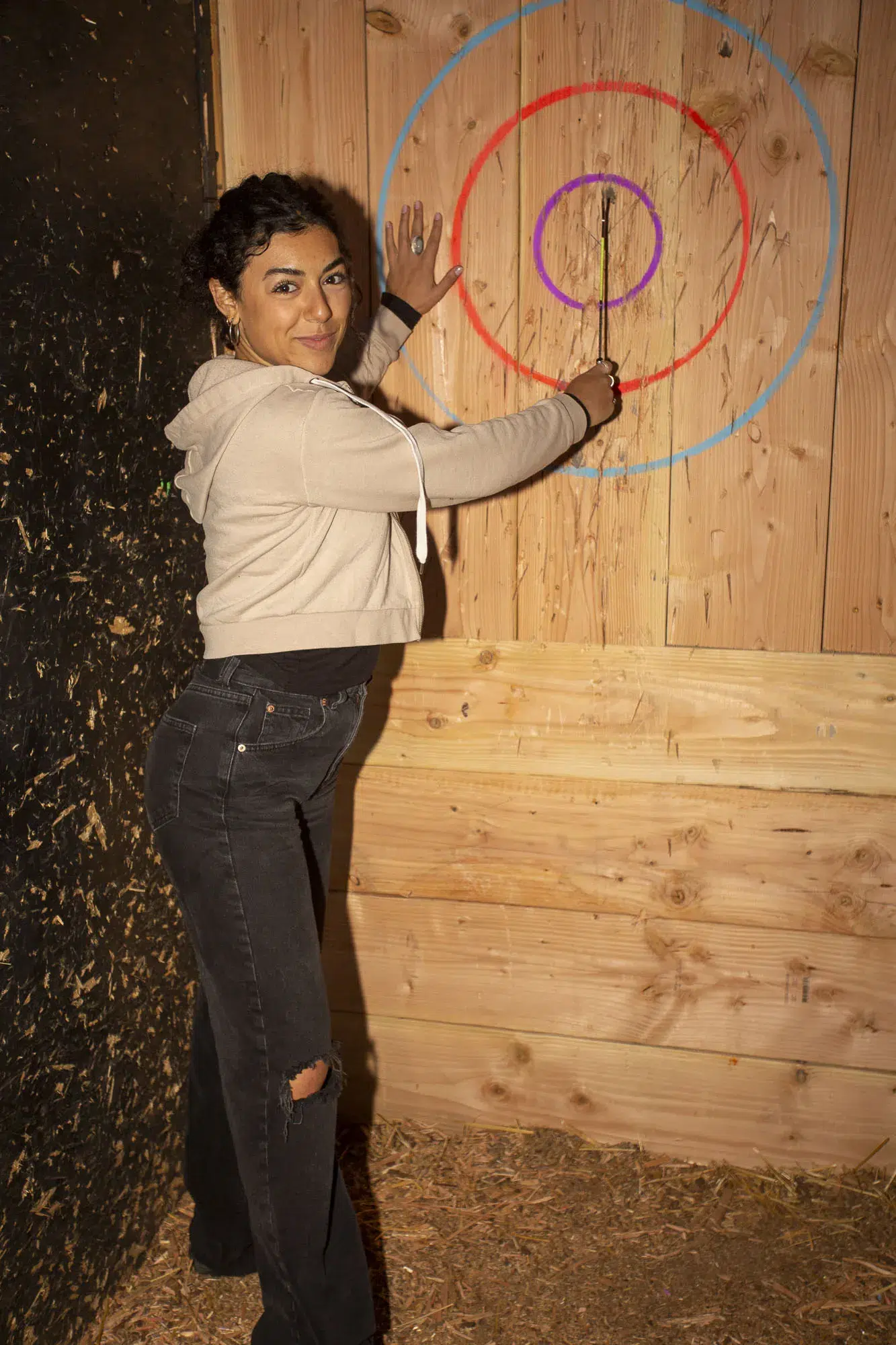Axe throwing is a popular recreational activity, but not everyone knows the target dimensions. Understanding these official standards is essential for improving skills or setting up a throwing experience. This article highlights the target’s official height and length, as well as the durable materials used. Maintaining these standards enhances safety and performance, aiding in effective axe-throwing experiences and informed target purchases.
Key Takeaways
- Axe-throwing targets have standardized dimensions to ensure fairness in competitions
- Common wood types for targets include pine, cedar, and poplar, each with unique benefits
- Regular inspection and maintenance of targets are essential for safety and performance
- Understanding impact zones helps maintain safety during axe-throwing activities
- Following official standards enhances practice consistency and provides a competitive advantage in tournaments
Axe Throwing Target Dimensions Overview

The historical context of axe-throwing targets traces back to traditional practices that evolved into competitive formats. Standardized dimensions, such as those set by the World Axe Throwing League (WATL), ensure fair play and consistency. This section will highlight the official axe-throwing target dimensions, the significance of the bullseye, and the typical prices associated with these targets.
Historical Context of Axe-Throwing Targets
Axe throwing has roots in ancient practices, where throwing tools at wooden targets was common for hunting and skill development. Historically, these targets were often made of lumber, providing a sturdy surface for players to practice their skills. Today, standardized dimensions set by organizations like the World Axe Throwing League help ensure that competitions are fair and consistent, allowing enthusiasts to test their abilities on similar setups.
Purpose of Standardized Dimensions
Standardized dimensions in axe-throwing targets create a level playing field for competitors. These official measurements ensure that all participants face the same challenge during competitions regardless of skill level. For example, consistent bullseye size and target height allow players to focus on improving their technique rather than adjusting to varying target setups.
Official Dimensions of Axe-Throwing Targets

Understanding the official dimensions of axe-throwing targets is essential for both beginners and seasoned players. The target width and height specifications ensure proper setup, while standard target depth requirements help maintain durability. Additionally, an overview of ring sizes and their placements offers insights into scoring potential and player strategy, all critical for honing axe-throwing skills.
Specifications for Target Width and Height
The official target width and height specifications ensure a fair axe-throwing experience. Typically, axe-throwing targets measure 24 inches in diameter and stand 48 inches tall. These dimensions provide players with a consistent challenge, allowing them to practice their aim and technique effectively in recreational and competitive settings.
Standard Target Depth Requirements
The standard depth requirement for axe-throwing targets is typically around 6 to 8 inches. This depth is important because it prevents the axe from getting stuck and allows for consistent scoring during practice or competitions. A target that is too shallow may lead to poor performance. At the same time, a properly measured depth ensures a durable and effective throwing surface, enhancing the overall experience for axe throwers, whether they are beginners or experienced competitors.
Overview of Ring Sizes and Their Placements
Axe-throwing targets feature rings that are crucial for scoring and strategy. The bullseye, which is the center ring, typically has a diameter of 7 inches, while the surrounding rings are spaced evenly, creating zones with varying point values. Understanding these ring sizes and their placements can greatly help players focus on aiming accurately, leading to improved performance whether they are competing or practicing their skills.
Materials Used for Axe-Throwing Targets

Common types of wood for axe-throwing targets include pine, cedar, and poplar, each offering unique benefits. The choice of material impacts durability and performance, affecting how well the axe sticks and how long the target lasts. This section will detail the advantages of these wood types and their suitability for axe-throwing, helping players choose the best targets for their needs.
Common Types of Wood for Targets
Common types of wood used for axe-throwing targets include pine, cedar, and poplar. Pine is known for being lightweight and easy to work with, making it a popular choice for beginners. Conversely, Cedar is durable and weather-resistant, providing better longevity for outdoor setups. Poplar balances weight and durability, offering good performance while being cost-effective. Choosing the right type of wood is essential for ensuring the target remains sturdy and provides a consistent throwing experience.
Benefits of Different Material Choices
Choosing the right material for axe-throwing targets has substantial benefits. For instance, targets made of cedar offer excellent durability and resistance to the elements, making them suitable for outdoor use. Meanwhile, pine targets are lightweight and cost-effective, appealing to novices looking for an accessible option.
Maintaining Axe-Throwing Target Dimensions

Maintaining axe-throwing target dimensions is vital for ensuring a fair and enjoyable experience. This section covers strategies for ensuring target integrity and helping players understand how to keep their targets in top shape. It also addresses adjusting targets over time as they wear down, allowing for consistent performance during practice and competitions.
Strategies for Ensuring Target Integrity
Ensuring the integrity of axe-throwing targets involves regular inspection and maintenance. Players should check for any signs of wear, such as deep grooves or cracks, and replace sections of the target as needed to maintain the official dimensions. Proper storage is also essential; keeping the targets in a dry, shaded area can prevent moisture and sun exposure damage.
- Regularly inspect targets for wear.
- Replace damaged sections to maintain target integrity.
- Store targets in dry and shaded areas to prevent moisture and sun damage.
How to Adjust Targets Over Time
To adjust axe-throwing targets over time, players should regularly monitor the wear and tear on the target. As the wood becomes damaged or develops deep grooves from repeated throws, players can replace sections or rotate the target to ensure it stays within official standards. Making timely adjustments helps maintain the target’s integrity, ensuring a fair and enjoyable throwing experience for all skill levels.
Safety Considerations Related to Target Dimensions

Understanding impact zones is essential for safe axe-throwing practices. This section covers the importance of knowing where axes will hit to prevent accidents. Additionally, recommendations for player distance help maintain safety during practice and competitions, ensuring everyone enjoys the activity. These insights aim to promote a secure throwing environment for all participants.
Understanding Impact Zones
Understanding impact zones is key to safe axe-throwing practices. These zones indicate where axes are likely to strike the target, helping players stay out of harm’s way. Players should always be aware of their surroundings and maintain a safe distance from the target to prevent accidents and ensure everyone can enjoy the sport safely.
Recommendations for Player Distance
Maintaining the recommended player distance is crucial to ensuring safety during axe throwing. Typically, players should stand at least 12 to 15 feet away from the target, which helps minimize the risk of accidental injuries from stray axes. By keeping a safe distance, participants can enjoy the sport while focusing on improving their throwing skills without compromising their safety or that of others nearby.
Advantages of Adhering to Official Target Standards

Adhering to official axe-throwing target standards offers several benefits for players. Casual players enjoy a uniform playing experience, which enhances their practice sessions. For those competing in tournaments, understanding these standards can provide a significant edge over opponents. Exploring these advantages helps players appreciate the importance of target dimensions and their impact on performance.
Benefits for Casual Players
Following official axe-throwing target standards offers casual players a consistent and enjoyable experience. By practicing on targets with set dimensions, players can develop their skills more effectively, knowing they face the same challenges each time. This uniformity boosts confidence and makes it easier for players to track their progress, helping them enjoy the sport to its fullest.
Competitive Advantages in Tournaments
Adhering to official target standards provides a competitive advantage in axe-throwing tournaments. Players familiar with the standardized dimensions can better hone their throwing skills as they practice on targets replicating competition setups.
Conclusion
Understanding axe-throwing target dimensions is vital for both casual players and competitors. Official standards create a fair playing field, ensuring everyone practices on the same setup while improving their skills. Players can enhance their technique and boost their competition performance by adhering to these specifications. Ultimately, recognizing the importance of target dimensions leads to a more enjoyable and rewarding axe-throwing experience.

